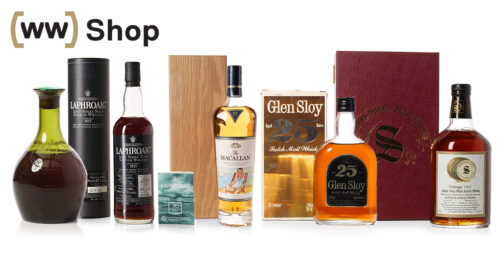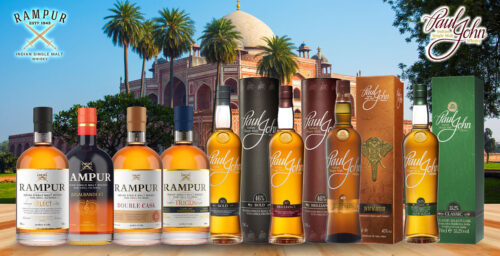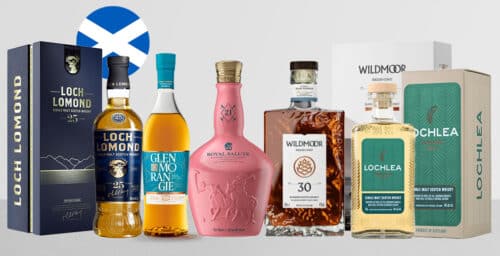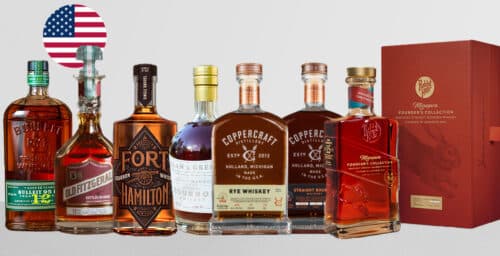Slane Irish Whiskey’s first master distiller, Gearóid Cahill, has a unique distinction … one of only a few people in the international drinks industry who’s achieved the ranks of both qualified master distiller and experienced master brewer.
A Westmeath native, Gearóid joined Slane Distillery in 2019 and worked to develop a production team, lead technical developments and optimize production across all three whiskey types – malt, pot still and grain whiskey.
In all, Gearóid has worked in the brewing and distilling industry for more than 25 years. Starting in June of 1996, he spent 19 years working with Diageo in a variety of global technical roles in various points across the globe.
Gearóid recently visited with The Whiskey Wash about his career and new adventures in Irish whiskey.

The Whiskey Wash: What was your first exposure to Irish beer and whiskey growing up?
Gearóid Cahill: “There is a long history in Ireland of storytelling, folklore, music and singing that stems from people meeting in neighbor’s houses on dark winter evenings. Food and drinks would have been a solid foundation to an evening of entertainment and craic. Roll this forward and the warmth and craic of Irish pubs is no mystery to the Irish at all.
“Growing up in rural Ireland, we would have had many visitors call to our house to catch up on all the news and gossip. While they were always well fed, on special occasions there might be a few bottles of stout or a drop of whiskey to add to the enjoyment of the evening. Is it any wonder that I was fascinated with how these traditional drinks are made in such a natural and wholesome way?”
TWW: What was the lure of brewing and distilling?
GC: “Throughout school I was always interested in science and how things worked. During my studies for my B.Sc. in Biotechnology, we studied and actually made beer, cheese and vinegar. I was fascinated in what living biological microbes (bugs) could do and how these natural processes could be harnessed by mankind to produce foods and beverages. Separately, I studied industrial distillation and little did I know that this technology combined with brewing would shape my career decades later.”
TWW: When did you turn a focus toward sustainability in distilling, and when did you start to see a real difference?
GC: “Long before I ever took up my first brewing job, I worked for many years in the field of environmental monitoring and analysis associated with industrial facilities and measuring their impact on their local environment. This interest stayed with me during my brewing and distilling years. While working with Guinness, I led their water program, monitoring water usage across all of their breweries globally and developing and supporting programs to minimize their water usage. I also worked on many process innovations to drive down energy usage.
“This approach then seemed perfectly natural when I migrated into the whiskey world and here at Slane, the very origins of the brand are steeped in sustainability. I work continually on improving our performance in terms of water and energy usage. Part of my daily management of the site is focused on energy and water usage and improving overall distillery efficiency.”
TWW: Tell us about the challenges of brewing and distilling in Africa, the Caribbean, and in the UK?
GC: “Production in Africa has a range of challenges, for example the regularity of power cuts. This can really mess up a large and sophisticated production plant and cause many headaches for the production team. In Africa and the Caribbean, the resourcefulness of the production teams to find simple, effective and brilliant solutions to problems is very impressive. This resourcefulness is borne out of lack of spares, slow lead times for special parts and a real-can do attitude within teams. The UK was very similar to Ireland with highly capable (but small) teams and well-designed facilities operating at high productivity.”
TWW: How did brewing and distilling in Africa and the Caribbean help with the art of distilling Irish whiskey?
GC: “Beer and whiskey production are natural processes and the first half of whiskey making is in effect beer making, so there are many transferable skills. While the range of raw materials in Africa (e.g cassava and sorghum) was very different to malted barley used for Irish whiskey, the overall objective is to convert starchy raw materials into fermentable sugars for yeast to convert to ethanol and other wonderful flavors.
“The processing of the raw materials has a major impact on the quality and efficiency of this conversion and heavily impacts the final beverage quality. A big focus on the quality of all materials (including water) is crucial combined with a high level of understanding of the production site to produce the best quality beverage in a very efficient way.”
TWW: What were the challenges of putting a state-of-the-art city center distillery in a 12th-century national monument?
GC: “The moral of the story is don’t build a distillery in an ancient church! While the finished distillery was world-class in terms of finish and operability, the amount of hoops that had to be jumped through was astronomical. There are a lot of regulations in place to protect ancient historical structures and rightly so. However, this presents a series of challenges during the design and build stages when you must source similar slates and wooden beams for roofing or avoid any modifications to the appearance of the front of the building. When you are up and running, moving raw materials in and new make spirit out on an ancient site coupled with city traffic can be an interesting challenge.”
TWW: How would you describe Slane and the surrounding community?
GC: “Slane village is nestled in the middle of the luscious pasture lands of the historical Boyne Valley. The area attracts many tourists annually (both domestic and international). Just outside the village is Slane Castle on the grounds where our distillery is located. My office looks out onto the Castle and is located in the old courtyard which was the Estate stables and workshops for a range of tradesmen. The Distillery is built in the old buildings off the courtyard while preserving the ancient look and feel of the site. We are fortunate to be able to source all of our barley for Pot Still and Grain Whiskey production from the Estate itself which is managed by Alex Conyngham and his team.”
TWW: Where do you see Irish whiskey on the global scene in five, 10, 20 years?
GC: “Irish Whiskey is well regarded globally as a premium product of the highest quality. The range of whiskeys on offer is broad to cater for a range of consumer tastes and budgets. The focus across all distilleries in Ireland will be on continuing to produce the best quality whiskey possible and safeguard the reputation of this great whiskey category. Distillers in Ireland are very innovative and resourceful and we are already seeing the emergence of whiskeys with interesting finishes. The emergence of new distilleries on the island has re-invigorated the innovative spirit of the Irish and there will be much more of this to see in the future.
“Interestingly, Irish whiskey, according to the regulations, must be matured in wooden casks for at least three years. While the primary wood of choice is oak, there are soundings of distillers experimenting using other wood types. Watch this space.”
TWW: What is a crazy project you’d like to do in a hypothetical world?
GC: “I have always been fascinated with innovation and thinking outside the box. Looking at whiskey production, there have been various tests and trials on the rapid maturation of whiskey. While the Irish Whiskey regulations are clear that whiskey must be aged for a minimum of three years in wooden casks, imagine having a flavor profile of a 12 year old malt whiskey after just three years while following these rules. Now that would be an interesting project!”








